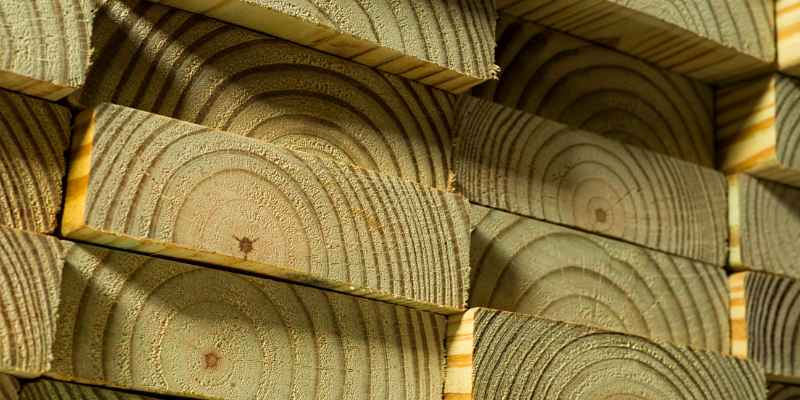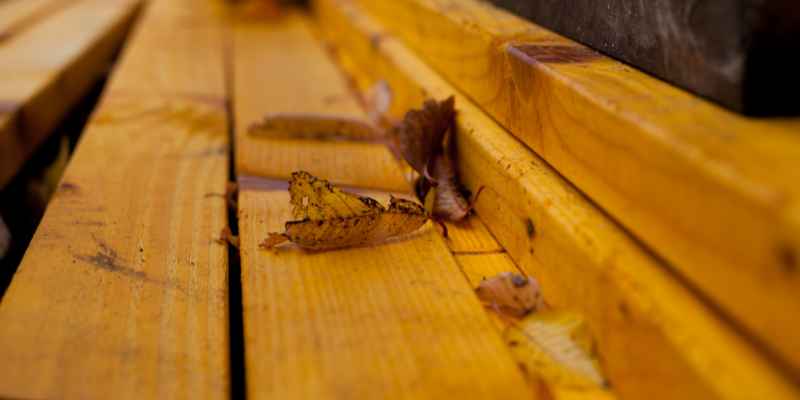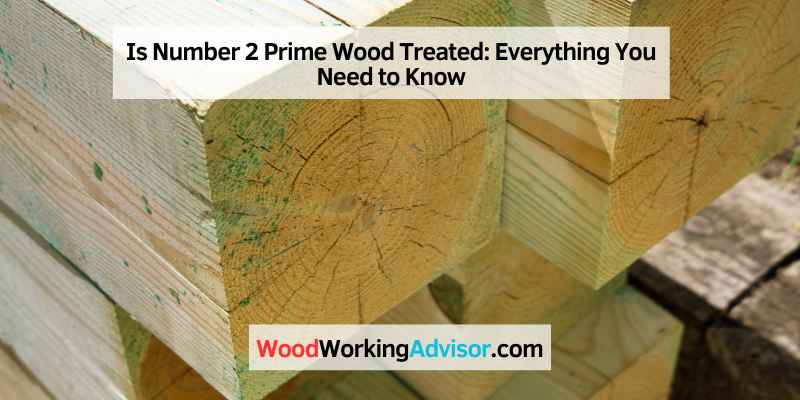No, Number 2 Prime Wood is not treated for protection against decay or termites. Number two grade lumber is commonly used for structural projects like decks and retaining walls.
It is pressure-treated to resist decay and rot caused by termites and other pests. This type of lumber is ideal for outdoor applications where exposure to the elements is a concern, providing durability and longevity for your construction projects. Whether you’re building a deck, play set, or landscaping feature, using pressure-treated lumber can help ensure the longevity and stability of your structures.
By choosing pressure-treated Number 2 Prime Wood, you can rest assured that your projects will stand the test of time.
Overview Of Number 2 Grade Lumber
Number 2 grade lumber, commonly used for deck and structure projects, is usually pressure-treated for strength and durability. In contrast, prime wood indicates higher-grade quality without treatment for rot prevention like pressure-treated lumber.
Number 2 grade lumber is a popular choice for various construction projects due to its strength and affordability. While it may not have the same visual appeal as higher-grade lumber, it is highly durable and suitable for applications where appearance is less important.
Common uses for number 2 grade lumber include:
Uses Of Number 2 Grade Lumber
- Decks
- Retaining walls
- Raised flower beds
- Barns
- Structures requiring strength
Number 2 grade lumber is pressure-treated, making it resistant to termites, fungal decay, and rot. This treatment involves forcing chemicals into the wood to ensure long-lasting protection. This makes it ideal for outdoor projects where the lumber will be exposed to the elements.
Cost Of Number 2 Grade Lumber
One of the main advantages of number 2 grade lumber is its cost-effectiveness. It is generally the least expensive pressure-treated lumber option suitable for construction projects. This makes it a popular choice for budget-conscious builders and homeowners.
When compared to higher-grade lumber, number 2 grade lumber offers great value without compromising on performance and durability. It provides a reliable option for projects that prioritize strength over visual appearance.
In conclusion, number 2 grade lumber is a versatile and cost-effective choice for various construction projects. Its strength and durability, combined with its affordability, make it a popular option for deck building, retaining walls, and other structures requiring robust materials.
Understanding Pressure-treated Lumber
Number 2 prime wood is not typically pressure-treated. Pressure-treated lumber is infused with chemicals to prevent rot and decay, while prime wood refers to higher-quality wood without knots or defects. So, if you are looking for pressure-treated lumber, you may want to consider options other than number 2 prime wood.
Definition Of Pressure-treated Lumber
Pressure-treated lumber is wood that has undergone a preservation process to enhance its durability and resistance to rot, decay, and termites. This treatment involves impregnating the wood with chemicals under pressure, ensuring longevity in outdoor applications.
Benefits Of Pressure-treated Lumber
Enhanced Durability: Pressure-treated lumber is known for its long lifespan, making it an ideal choice for outdoor structures.
Resistance to Decay: The treatment process protects the wood from fungal decay, ensuring longevity in various weather conditions.
Termite Protection: Pressure-treated lumber is resistant to termite infestations, making it a reliable choice for structures requiring pest prevention.
Cost-Effectiveness: Number two grade pressure-treated lumber offers a balance between quality and affordability, making it suitable for a wide range of construction projects.
Difference Between Prime Wood And Pressure-treated Lumber
When choosing wood for construction or outdoor projects, it’s essential to understand the difference between prime wood and pressure-treated lumber. Each type of wood has its unique properties and applications, so being familiar with their distinctions can help you make the right choice for your specific project.
Definition Of Prime Wood
Prime wood refers to high-quality, carefully selected lumber that is free of knots and defects. This type of wood is typically used for visible parts of a construction project, where appearance and aesthetics are important.
Definition Of Pressure-treated Lumber
On the other hand, pressure-treated lumber undergoes a specialized treatment process where preservatives are forced into the wood under pressure. This treatment protects the wood from rot, decay, and insect damage, making it suitable for outdoor and structural applications.
Comparing Prime Wood And Pressure-treated Lumber
When comparing prime wood and pressure-treated lumber, it’s important to consider the intended use of the wood. Prime wood is ideal for visible elements of a project where appearance matters, while pressure-treated lumber is best suited for outdoor and structural applications where protection from rot and decay is crucial.
Importance Of Pressure Treatment For Wood

Pressure treatment is crucial for preserving the longevity and durability of wood products. By subjecting wood to high pressure, it becomes impregnated with preservative chemicals, effectively protecting it from various damaging factors such as fungal decay, rot, and termite infestation. The significance of pressure treatment cannot be overstated, especially for outdoor wood applications where exposure to moisture and pests is inevitable.
Preventing Fungal Decay
Pressure treatment creates a barrier against the development of fungal decay within the wood. This method ensures that the preservative chemicals penetrate deep into the wood, effectively inhibiting the growth of fungi that can compromise its structural integrity over time.
Preventing Rot
By subjecting wood to pressure treatment, the process effectively prevents rot from forming. The infusion of preservatives acts as a shield against moisture and environmental factors that could lead to the deterioration of the wood, maintaining its strength and structural integrity.
Preventing Termite Infestation
With pressure-treated wood, the chemicals infused during the treatment process act as a deterrent against termite infestation. This protective measure ensures that wooden structures remain resilient and free from damage caused by termites, enhancing the longevity of the wood.
Different Lumber Grades And Their Uses

Understanding different lumber grades is crucial when choosing the right wood for your projects. Each grade has specific characteristics and uses, ensuring you select the most suitable option for your needs.
Prime Grade Lumber
Prime grade lumber is the highest quality wood available, free of knots and defects. It is perfect for projects where appearance is key, such as furniture or decorative items.
Other Lumber Grades
Other grades like number 2 lumber are more affordable and ideal for structural projects like decks, retaining walls, and barns. While they may not have the same aesthetic appeal as prime grade, they offer durability and strength.
Prime wood treated with primer enhances the paint adherence, while pressure-treated lumber is infused with chemicals to prevent rot and decay, making it ideal for outdoor projects.
In conclusion, understanding the different lumber grades ensures you make the right choice for your specific project needs.
Prime Wood Vs. Pressure-treated Lumber: Which Is Better?
When it comes to selecting the right wood for your construction projects, it’s important to understand the differences between prime wood and pressure-treated lumber. Both options have their own advantages and drawbacks, and choosing the right one can make a significant impact on the longevity and appearance of your project. In this article, we will explore the factors to consider, as well as the pros and cons of both prime wood and pressure-treated lumber.
Factors To Consider
Before making a decision, it’s crucial to consider certain factors that can influence your choice of wood. These factors include:
- Project Requirements: Consider the specific requirements of your project, such as its location, purpose, and expected durability.
- Budget: Evaluate your budget and determine how much you are willing to spend on the wood materials.
- Environmental Impact: Take into account the environmental impact of each option, including the use of chemicals in pressure-treated lumber.
- Appearance: Evaluate the appearance and aesthetics of the wood, as this can vary greatly between prime wood and pressure-treated lumber.
Pros And Cons Of Prime Wood
Prime wood refers to higher-grade lumber that is generally free of knots and defects. Here are the pros and cons of using prime wood:
| Pros | Cons |
|---|---|
| High-quality appearance | Higher cost compared to pressure-treated lumber |
| Natural beauty and grain patterns | Less resistant to decay and rot |
| Suitable for projects where aesthetics are important | Requires additional treatment for protection against weathering |
Pros And Cons Of Pressure-treated Lumber
Pressure-treated lumber is wood that has undergone a chemical treatment process to increase its durability and resistance to decay. Here are the pros and cons of using pressure-treated lumber:
| Pros | Cons |
|---|---|
| Greater resistance to decay, rot, and pests | Chemicals used in treatment can be harmful to the environment |
| Cost-effective option | May have a greenish tint or rough appearance |
| Requires less maintenance and treatment | Not suitable for projects where aesthetics are a top priority |
Considering these factors and weighing the pros and cons of prime wood and pressure-treated lumber can help you make an informed decision for your construction project. Remember to prioritize the specific needs of your project and choose the wood option that aligns best with your requirements.
Where To Buy Prime Wood And Pressure-treated Lumber
When it comes to finding prime wood and pressure-treated lumber, there are several options available. Whether you prefer shopping at popular retailers or online, you can easily find the materials you need for your construction projects.
Popular Retailers
If you prefer to buy prime wood and pressure-treated lumber in-person, visiting popular retailers is a great option. Here are a few popular retailers where you can find these products:
- The Home Depot: The Home Depot offers a wide selection of prime wood and pressure-treated lumber. You can conveniently check if the products are in stock nearby by visiting their website.
- Stine Home & Yard: Another excellent retailer for prime wood and pressure-treated lumber is Stine Home & Yard. They offer the convenience of online shopping, allowing you to browse their selection and make your purchase from the comfort of your home.
- Lowe’s: Lowe’s is another trusted retailer that provides prime wood and pressure-treated lumber. Their extensive inventory ensures you can find the right materials for your project.
Online Options
Shopping online for prime wood and pressure-treated lumber offers convenience and the ability to compare prices. Here are a few online options where you can find these products:
- Google Shopping: Google Shopping provides a straightforward way to search for prime wood and pressure-treated lumber. You can easily compare prices from different sellers and find the best deal.
- Amazon: Amazon offers a wide range of prime wood and pressure-treated lumber from various sellers. You can read customer reviews and ratings to help you make an informed decision.
- ProWood Lumber: ProWood Lumber is an excellent online resource for prime wood and pressure-treated lumber. They offer premium-grade materials suitable for different construction projects.
Tips For Working With Prime Wood And Pressure-treated Lumber
When it comes to working with prime wood and pressure-treated lumber, it’s important to follow the right preparation and safety measures, as well as understand the treatment and maintenance methods to ensure the longevity and quality of your projects.
Preparation And Safety Measures
Preparation and safety measures are crucial when working with prime wood and pressure-treated lumber. Before starting any project, ensure that you have the necessary safety gear, including gloves, goggles, and a mask to protect yourself from harmful chemicals and dust. Additionally, it’s important to work in a well-ventilated area to minimize exposure to fumes. When cutting or sanding pressure-treated lumber, it’s essential to wear a dust mask to prevent inhaling harmful particles. Furthermore, prime wood and pressure-treated lumber should be stored in a dry, covered area to prevent moisture damage before use.
Treatment And Maintenance
When it comes to treatment and maintenance, prime wood and pressure-treated lumber require careful attention to ensure their longevity. Properly treated lumber should be regularly maintained to prevent decay and rot. It’s important to regularly inspect the wood for any signs of damage and treat it with appropriate wood preservatives, as well as reapply a protective sealant as needed to maintain its durability. Moreover, when handling pressure-treated lumber, it’s crucial to follow the manufacturer’s guidelines for maintenance and treatment to ensure the wood’s longevity and structural integrity.
Frequently Asked Questions For Is Number 2 Prime Wood Treated
Is Number 2 Wood Treated?
Yes, number 2 wood is treated. It is pressure-treated with micronized copper azole to protect it from termites, fungal decay, and rot. It is suitable for a variety of outdoor projects where the lumber is exposed to the elements.
Is #2 Prime Pressure-treated?
Yes, #2 pressure-treated lumber is treated with chemicals to prevent rot and decay. It is suitable for construction projects.
Is Prime Wood The Same As Treated?
Prime wood and treated wood are not the same. Prime wood is higher grade wood, while treated wood has been pressure-treated to prevent decay and rot.
What Is The Difference Between #1 Prime And #2 Prime Lumber?
#1 prime lumber has fewer knots and better appearance, while #2 prime lumber may have more defects and is less consistent.
Conclusion
When it comes to prime wood, remember that prime lumber is not the same as pressure-treated lumber. Prime wood receives a coat of primer for better paint adhesion, while pressure-treated wood is treated with chemicals to prevent rot and decay.
Choose the right type of lumber for your project.


